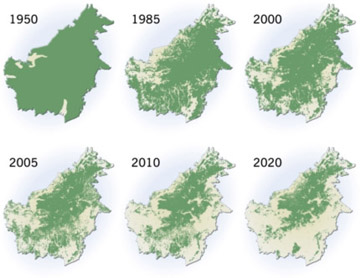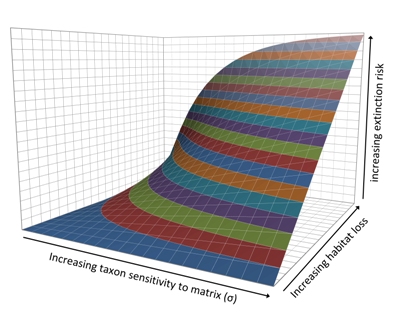(PAINT.ORG) The U.S. Occupational Safety and Health Administration (OSHA) announced on July 13 that it is
delaying enforcement of the anti-retaliation provisions in its
new injury and illness tracking rule for the purposes of conducting additional outreach and providing educational materials and guidance for employers. Originally scheduled to begin Aug. 10, 2016, enforcement will now begin Nov. 1, 2016.
OSHA released its "Improve Tracking of Workplace Injuries and Illnesses" Final Rule on May 11. While much of the regulation prescribes when employers should submit electronic illness and injury records to OSHA, the final rule also included requirements for employers to do the following:
- Inform workers of their right to report work-related injuries and illnesses without fear of retaliation;
- Implement procedures for reporting injuries and illnesses that are "reasonable" and do not deter workers from reporting; and
- Incorporate the existing statutory prohibition on retaliating against workers for reporting injuries and illnesses.
However, in this final rule, OSHA makes new policies about employer incentive programs and mandatory drug testing, creating much concern among employers and the legal community that these long-standing practices could now be considered "deterring or discouraging" employees from reporting depending on how OSHA enforces this final rule.
Certain Drug Testing Policies and Incentive Programs Could Be Considered "Deterring" Employees from Proper Reporting, in Violation of New Regulation
In the final rule, OSHA states that it believes blanket post-injury drug testing policies "deter proper reporting." The final rule prohibits employers from using drug testing (or the threat of drug testing) as a form of adverse action against employees who report injuries or illnesses. OSHA gives the following example of how this should be implemented in the final rule:
"To strike the appropriate balance here, drug testing policies should limit post-incident testing to situations in which employee drug use is likely to have contributed to the incident, and for which the drug test can accurately identify impairment caused by drug use. For example, it would likely not be reasonable to drug-test an employee who reports a bee sting, a repetitive strain injury, or an injury caused by a lack of machine guarding or a machine or tool malfunction. Such a policy is likely only to deter reporting without contributing to the employer's understanding of why the injury occurred, or in any other way contributing to workplace safety.
Employers need not specifically suspect drug use before testing, but there should be a reasonable possibility that drug use by the reporting employee was a contributing factor to the reported injury or illness in order for an employer to require drug testing. In addition, drug testing that is designed in a way that may be perceived as punitive or embarrassing to the employee is likely to deter injury reporting."
As for employee incentive programs, OSHA addresses the concerns of commenters in the final rule by saying that if programs are not "structured carefully, they have the potential to discourage reporting of work-related injuries and illnesses." OSHA states that the specific rules and implementation of any given incentive program must be considered to determine whether or not it violates the final rule. OSHA provides the following examples in the final rule:
"It is a violation of paragraph (b)(1)(iv) for an employer to take adverse action against an employee for reporting a work-related injury or illness, whether or not such adverse action was part of an incentive program. Therefore, it is a violation for an employer to use an incentive program to take adverse action, including denying a benefit, because an employee reports a work-related injury or illness, such as disqualifying the employee for a monetary bonus or any other action that would discourage or deter a reasonable employee from reporting the work-related injury or illness.
In contrast, if an incentive program makes a reward contingent upon, for example, whether employees correctly follow legitimate safety rules rather than whether they reported any injuries or illnesses, the program would not violate this provision."
Employers now will have to re-evaluate their current policies to make sure they are consistent with OSHA's interpretation of these new employee retaliation provisions.
OSHA Delay and Pending Lawsuit
While OSHA states that the reason for the delayed implementation was to provide the opportunity to conduct additional outreach, this delay comes at the heels of an industry-initiated lawsuit filed against OSHA on July 8, 2016, challenging these very sections of the new regulation.
In the complaint for declaratory and injunctive relief, the plaintiffs Associated Builders and Contractors, National Association of Manufacturers, American Fuel and Petrochemical Manufacturers, Great American Insurance Company, Owen Steel Company, Atlantic Precast Concrete, and Oxford Property Management assert that these new provisions are unlawful because OSHA has exceeded its statutory authority, and these policies prohibit or otherwise limit incident-based employer safety incentive programs and routine mandatory post-accident drug testing requirements.
"Incident Incident-based safety incentive programs and routine, mandatory post-accident drug testing programs…help employers to promote workplace safety, which is supposed to be OSHA's primary mission also," the complaint states. "Instead, out of a misguided zeal to improve accuracy of reporting on workplace injuries (albeit with no evidence that injuries are not already being accurately reported), OSHA has lost sight of the importance of reducing the number and severity of injuries themselves."
The complaint goes on to assert that OSHA provides no evidence that drug testing or safety incentive programs lead to inaccurate reporting or underreporting of workplace injuries and illnesses, and that a prohibition or other limitation on safety programs will result in an increase in work-related injuries and illnesses. The plaintiffs also state that OSHA failed to consider the evidence presented that demonstrates the value of safety incentives and post-accident drug testing to workplace safety and health.
 The research provides a positive model for protecting a forest region that is a hub for biodiversity, including serving as a
The research provides a positive model for protecting a forest region that is a hub for biodiversity, including serving as a  Figure 1: Extent of Deforestation in Borneo 1950-2005, Projection to 2020. The island of Borneo is split between Malaysia, Indonesia, and Brunei.
Figure 1: Extent of Deforestation in Borneo 1950-2005, Projection to 2020. The island of Borneo is split between Malaysia, Indonesia, and Brunei. The matrix model.
The matrix model.




